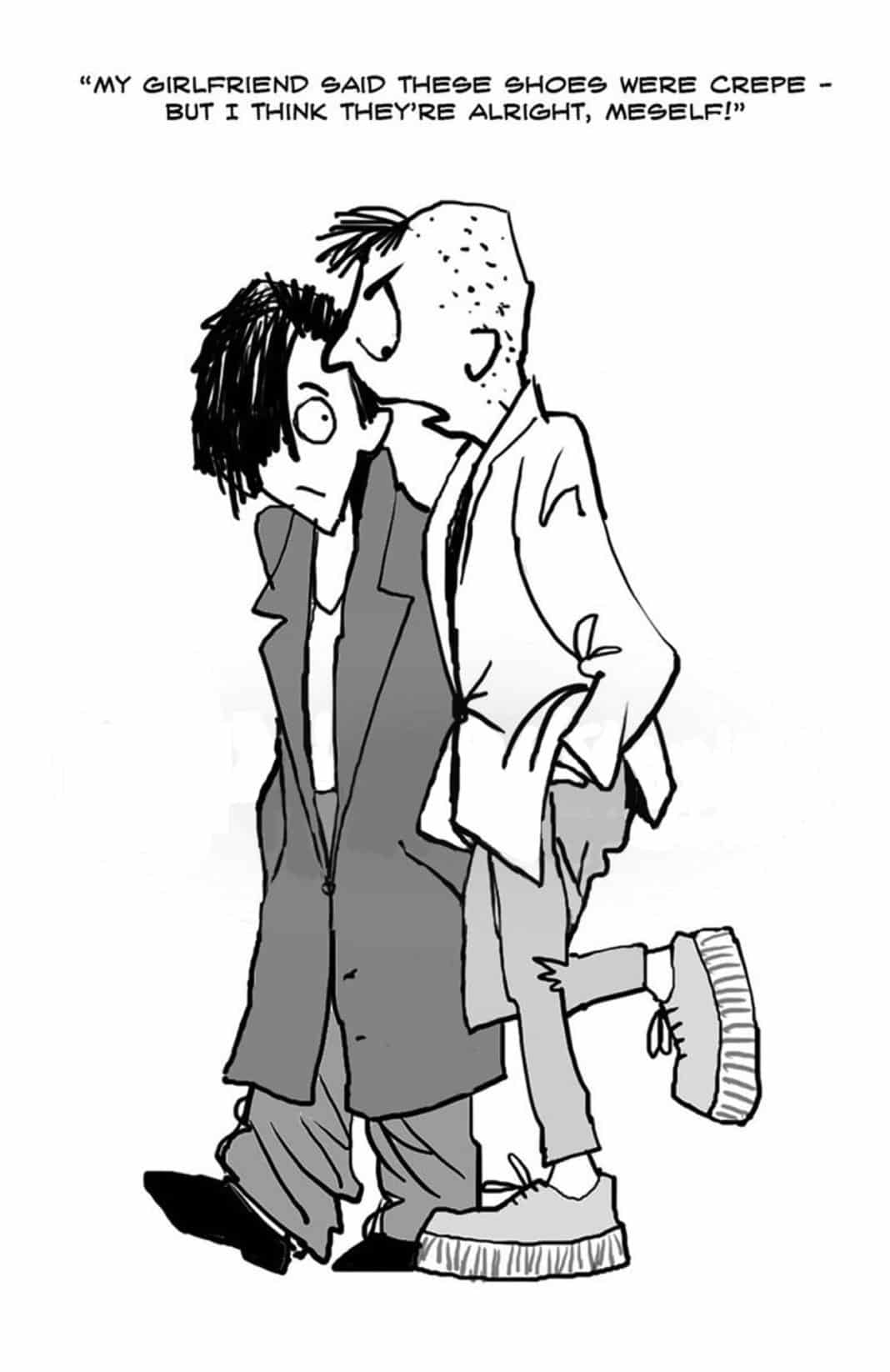By David Aitken
The Italian film director Frederico Fellini, when asked about his work, said “Don’t tell me what I’m doing, I don’t want to know!” Which neatly sums up adolescence, or in some cases, most of our lives.
This is nowhere more evident than in the realm of fashion, where whole generations can become helpless victims overnight, or sometimes over decades. Did you know a blanket with sleeves is a slanket? Do you actually have one?
Flared trousers had been around for a long time, but only one decade rescued them from wherever they had disappeared to — the 1970s. Also referred to as bell bottoms, loon pants and hip-huggers, they became wider from the knees downwards. Mine went in the dustbin in 1971, my flares not my knees. Sailors wore bell bottoms to make it easier to retrieve a shipmate who had fallen overboard, perhaps by tripping on the excess material of his trousers.
The opposite of flares as fashion fads were drainpipe trousers, skinny and straight. Zippers were needed to get them onto your legs unless you had reet petite feet. I often fell over when trying to get into drainpipes, hardly the suave fashionista you probably imagine me to be. Talk about falling victim to fashion. Victorian doctors believed tight trousers were responsible for an outbreak of apoplexy in New York, so presumably they advised patients to move elsewhere.
‘Teddy Boys’ were a youth subculture in the mid-1950s and 60s. Their clothing included long drape jackets with a velvet trim collar and a ‘Slim Jim’ tie and crepe-sole shoes. Teddy Girls, also known as ‘Judies’, were much more stylish — pencil skirts, straw boater hats, cameo brooches, high-heeled toreador shoes, elegant clutch bags, and ponytails (to be clutched at your peril.) I was more afraid of them than I was of Teddy Boys.
Wide lapels, blue suede shoes (later, cowboy boots from the Wild West store on Pier 39 in San Francisco), bootlace tie and Brylcreemed ducktail haircut, what a fashion plate I must have been. I had come a long way (or felt I had) from pieces of cardboard as substitute insoles inside my leaky shoes. I came late to the door that said ‘Dior’.
Discussing fashion in any meaningful sense is difficult, since ‘current’ fashion just goes in one year and out the other (like that joke.) I was walking through an Edinburgh antique market with my late (and at that stage, antique) mother-in-law, when she saw a large jar for holding preserves, on offer for a considerable sum of money.
“I threw away one identical to that, in 1951,” she said. “I should have put it in the attic.” I said nothing, I was still doing the arithmetic and working out that by her reckoning, I was now a valuable antique. Perhaps one day I’ll come back into fashion.





